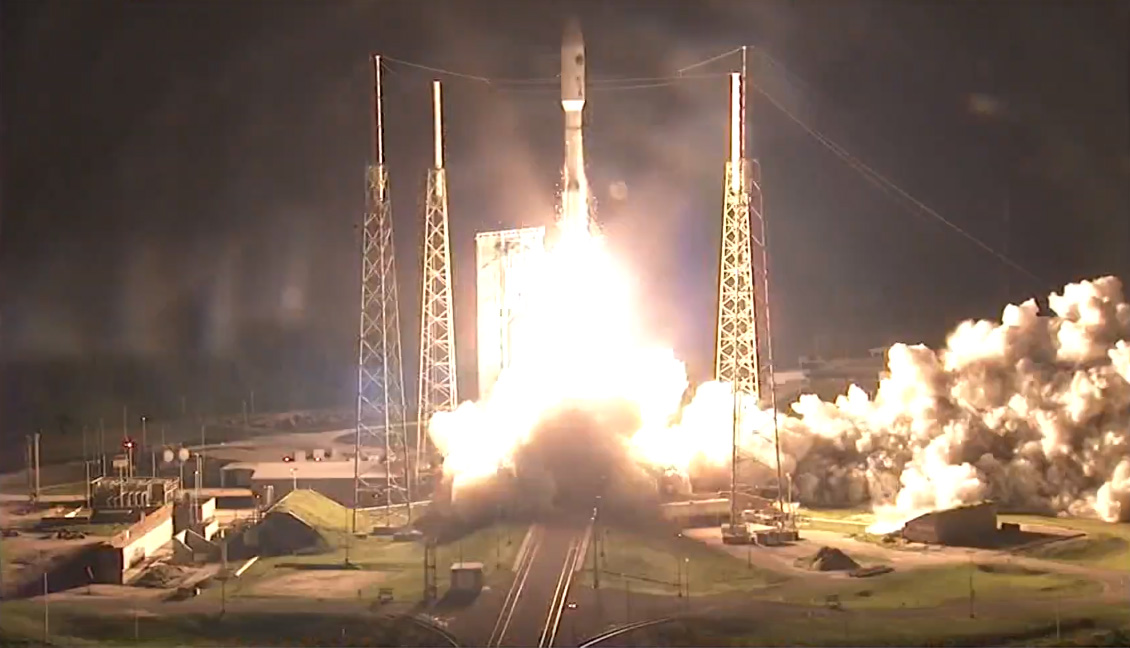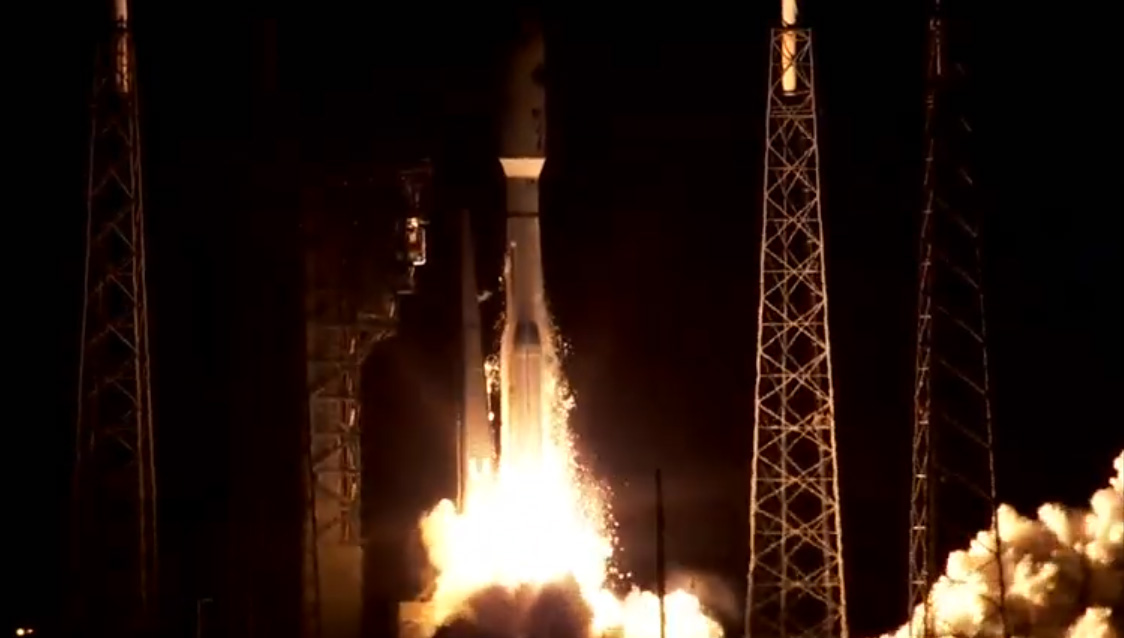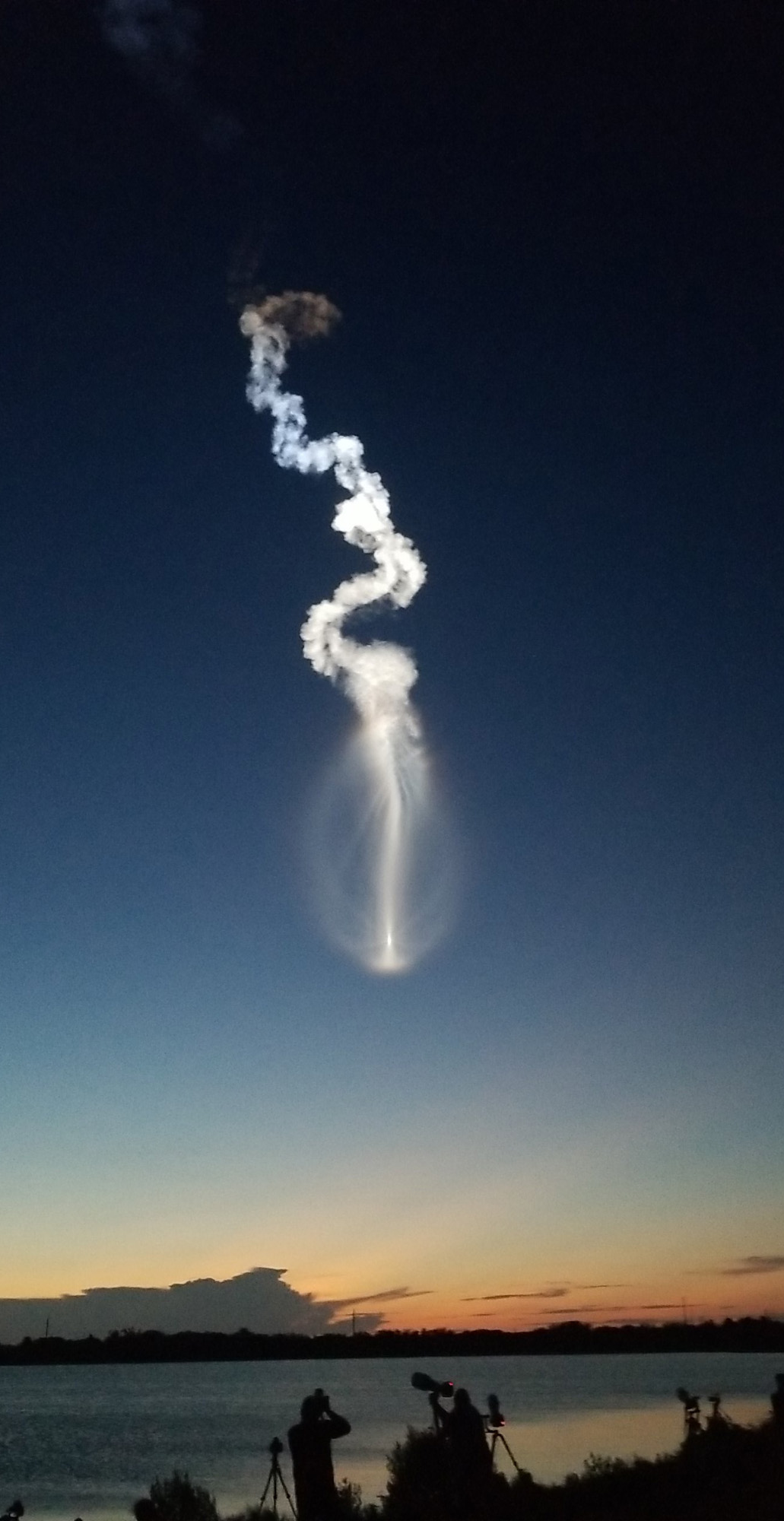Atlas V Rocket Launches Advanced Communications Satellite for US Military
The AEHF-5 satellite will provide jam-proof communications between military leadership and deployed forces.
CAPE CANAVERAL, Fla. — A United Launch Alliance (ULA) Atlas V rocket took to the skies early this morning (Aug. 8), delivering a highly advanced communications satellite into space for the U.S. Air Force.
The rocket, outfitted with five strap-on solid rocket motors, leapt off the launch pad at Space Launch Complex 41 here at Cape Canaveral Air Force Station at 6:13 a.m. (1013GMT) after a 29-minute delay due to minor technical glitches that were quickly solved.
Perched atop the rocket was the Air Force's fifth Advanced Extremely High Frequency spacecraft (AEHF-5), a secure military communications satellite that will provide jam-proof communications — including real-time video — between U.S. national leadership and deployed military forces.
Related: Military Space — The Latest Launches, Tech and Videos


An advanced military satellite
The $1.1 billion AEHF constellation is built by Lockheed Martin and will ultimately consist of six satellites, replacing the military's aging Milstar constellation. Working in tandem, the satellites will provide coverage from a perch in geostationary orbit, meaning that they will drift along with the planet’s rotation, providing coverage over the same position above the Earth.
Today’s launch marks the 80th flight of an Atlas V overall, and the 10th in the 551 configuration. The most powerful version of the Atlas V, the 551 comes with five solid rocket motors, a 16.4-foot-wide (5 meters) payload fairing, and a single-engine Centaur upper stage.
The rocket also carried to space an experimental cubesat, which is also owned by the U.S. military. The tiny hitchhiker will separate from the rocket's upper stage before AEHF-5 and will test new orbital debris-tracking technologies.
Get the Space.com Newsletter
Breaking space news, the latest updates on rocket launches, skywatching events and more!

Originally scheduled to fly on June 25, today's launch was pushed back after a component failed during fina checkouts. Crews removed the suspect hardware and rescheduled the launch.
The early morning launch marked the second liftoff from Florida in just under 48 hours. On Tuesday evening (Aug. 6), a SpaceX Falcon 9 rocket ferried the Israeli communications satellite Amos-17 to orbit.
With the number of launch providers setting up shop at the Cape continually increasing, the Air Force has been streamlining its processes and updating infrastructure to be in a better position to support more launches with less downtime in between. Their eventual goal is to launch multiple vehicles within 24 hours, Air Force officials have said.
The Air Force is optimistic that same-day launches are on the horizon; however, that achievement would still depend on which launch complexes the vehicles were launched from and what range resources were needed.
Related: Jam-Resistant US Military Satellite Lifts Off in Midnight Launch
Starliner test launch next
This is the final Atlas V launch before Boeing and ULA begin launching the Starliner capsule for NASA's Commercial Crew Program. The space agency plans to use Starliner, as well as SpaceX's Crew Dragon capsule, to start taking astronauts to and from the International Space Station sometime this late year or next year.
The Starliner spacecraft, similar in shape to the capsules used during the Apollo era, is designed to carry up to seven astronauts, with additional cargo also possible if fewer astronauts fly on a particular mission. Measuring 14.8 feet (4.5 m) across at its widest point, the gumdrop-shaped spacecraft will first fly into space aboard Atlas V rockets.
Starliner’s uncrewed test flights are scheduled for August 2019, with crewed test flights tentatively set for November 2019. The uncrewed flight will be similar to SpaceX's Demo-1 flight of its Crew Dragon spacecraft, which took place in March of this year.
Next up for ULA is the launch of an Air Force GPS satellite. The spacecraft, also built by Lockheed Martin, is set to lift off from Space Launch Complex 37 atop a Delta IV rocket on Aug. 22 at 9 a.m. EDT (1300 GMT).
- Atlas V: Reliable, Flexible Rocket
- Air Force Satellite is the 'Largest Uncrewed Structure in Space'
- Get an Up-Close Look at Boeing's New CST-100 Starliner Spaceship (Photos)
Follow Amy Thompson on Twitter @astrogingersnap. Follow us on Twitter @Spacedotcom or Facebook.
Join our Space Forums to keep talking space on the latest missions, night sky and more! And if you have a news tip, correction or comment, let us know at: community@space.com.

Amy Thompson is a Florida-based space and science journalist, who joined Space.com as a contributing writer in 2015. She's passionate about all things space and is a huge science and science-fiction geek. Star Wars is her favorite fandom, with that sassy little droid, R2D2 being her favorite. She studied science at the University of Florida, earning a degree in microbiology. Her work has also been published in Newsweek, VICE, Smithsonian, and many more. Now she chases rockets, writing about launches, commercial space, space station science, and everything in between.









